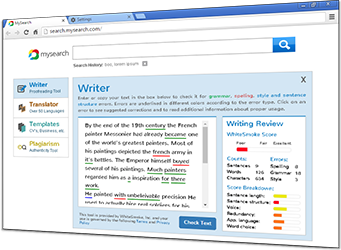How to Write an Introduction
If you want to know how to write an introduction (or an introductory paragraph), then you've come to the right place. Most forms of writing require some form of introduction. Commonly, the introduction consists of one introductory paragraph. In longer works or for complex topics, the introduction might be several paragraphs or even longer. A non-fiction book, for instance, often has a full chapter that serves as the introduction.
An Introduction Serves Two Purposes
- It gives readers an idea of what the rest of the writing will say.
- It provides a reason for readers to keep reading.
The first reason is the most important. What is this about? Some methods for letting readers know include:
- A clear and specific thesis statement
- Providing background or history for the topic
- Defining a term, phrase, or concept central to the writing
- Providing statistics
Most academic writing requires a thesis and many types of academic writing expect the introduction to provide a thorough background in the introduction that might, in some cases, include a summary of previously published articles and books relevant to the paper.
Use a proofreading tool you can trust to check your texts and avoid embarrassing mistakes.

Building Reader Trust with the Introduction
In order for readers to trust the writer, the introduction must be well written with strong vocabulary and good grammar. The goal is to hold the reader's attention. Remember that while you want to excite your readers' interest, you also want to sound as though you know the topic you are writing about. Some of the strategies in the bullet-list above will help. Here are some others:
- Pose a specific question that will invite the reader to keep reading for the answer - a provocative question works well to engage readers, so long as it doesn't put them off
- Choose statistics that you expect will surprise your reader or that go against the common belief about a topic
- Tell a short, interesting anecdote (or story) related to the topic
- Provide an interesting (and relevant) quote
- Develop an unusual or unexpected comparison
- Don't use stereotypes, clichés (over-used expressions with little meaning left in them), or boring constructions.
Do be aware of what is expected by your reader. Some fields dismiss stories and anecdotes as irrelevant, for instance. And while one group of readers might think it boring to say: "This paper will discuss the topic of how to write an introductory paragraph"; another group of readers might not only expect you to be that blunt, but also might dismiss the writing as poor writing if such a sentence did not appear by the end of the introduction.
Here's a writing tip: Don't write your introduction until you are revising your first draft. That way, you will have a better idea of what the paper actually says, instead of what you think it will say.
If you follow these simple guidelines, you will be able to write a good introduction. See also our articles How to Use Paragraph Transitions, and How to Write a Conclusion for more tips on writing.
Make sure you check all of your texts with WhiteSmoke!




